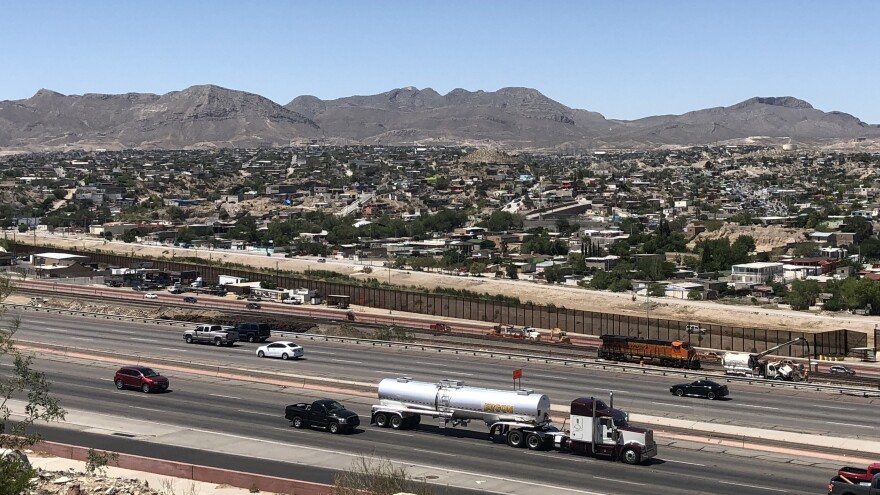Along the dry, rocky desert of El Paso, Texas, a brown fence stretches for miles. The fence marks the southern U.S. border that separates El Paso from its Mexican sister city, Juarez.
Twenty-two-year-old Antonio Villaseñor-Baca was born and raised in El Paso. His hometown is part of a huge "borderplex," where three cities — El Paso, Texas; Las Cruces, N.M.; and Juarez, Mexico — converge. Villaseñor-Baca has an uncle in Juarez, and while growing up, his dad would take him back and forth over the border a lot.
To Villaseñor-Baca, Juarez doesn't seem like another country.
"If you wanna go out and party, you go to Juarez. A lot of people work in El Paso. You have family in Juarez, but you live in El Paso, or vice versa. It really seems like just a huge hassle to go through all of this stuff at the border," he says.
For young people like Villaseñor-Baca, life on the border isn't just about the momentous crossings we read about in the news. Commuting between two countries is a part of everyday life. There are even kids with dual citizenship who live in Juarez with their parents and cross the border to go to school.
"It's really weird, because growing up as a kid, there's just other kids in your school," Villaseñor-Baca says. "You don't really tend to label them or divide. And it's not until you get older that you start seeing, well, it's the kids who speak Spanish who are doing the daily commute. And it's when the terms like American and Mexican and Mexican-Americans start coming into place."

Every day, many people and goods flow between El Paso and Juarez. The culture and economies of both cities rely on each other. Kenia Guerrero, 23, is a part of that flow. She grew up in Juarez but just finished college in El Paso, and she crosses the border into Texas daily to help out at her parents' cowboy boot shop. She commutes via the Santa Fe Bridge, which leads to central El Paso. Depending on the line on any given day, she says the trip from Juarez to El Paso can take from 30 minutes to three hours.
To ease her commute between the two cities, Guerrero purchased a SENTRI (Secure Electronic Network for Travelers Rapid Inspection) pass, which allows her to drive in an express lane that cuts down the time it takes for her to cross the border. Thousands of people in the El Paso-Juarez region pay fees and go through background checks to obtain a SENTRI card.
Guerrero says she feels equally at home in Juarez and El Paso.
"My first 15 years, I didn't know about borders," she says. "I live in Juarez, but I would buy my clothes and would by certain foods [in El Paso]. It was pretty normal."
But life on the border is changing, she adds. These days, she says, "You are sometimes afraid."
Now, Guerrero is extra careful whenever she crosses, because she says agents have gotten stricter since President Trump took office. If she's caught with a prohibited item — like even an apple she packed for lunch and forgot to throw away — Guerrero could lose her fast pass.
Recently, she had a close call.
"I had a crushed candy in my cup holder, and the agent asked me: 'Is that cocaine?' And I got nervous — not because it was cocaine, but because it's just a question — like, how can he think I'm bringing cocaine? I just told him something along the lines, 'No, but if you want to try it, you can,' " Guerrero says.
The agent passed on Guerrero's offer to try the candy and let her cross.
As security and media attention at the border increases, Guerrero and Villaseñor-Baca are trying to hold onto their sense of hometown normalcy.
"Yeah, it's a border, and anywhere else in the country will see it as such. But for us, it's just two cities, divided by a fence," Villaseñor-Baca says.
For the time being at least, he and Guerrero will keep crossing that fence. Because for the people who live and work here, these two cities — El Paso and Juarez — really do feel like one.
This story was produced byYouth Radio.
Copyright 2021 YR Media. To see more, visit YR Media. 9(MDA5NTM4MTIyMDE0MTg3NDc2MTVlZjdmNQ001))

